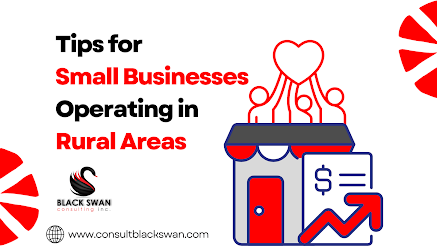SBA DEBT RELIEF & MORE
During the global pandemic that hit the world in 2020 and scooped the world economy off its feet, SBA brought in a new way to deal with various debts-stricken businesses across the nation. As a part of the CARES Act, SBA is authorized to pay six months of principal, interest, and any associated fees that borrowers owe. This debt relief to borrowers was originally dependent on the loan being fully disbursed prior to September 27, 2020, and does not apply to loans made under the Economic Injury Disaster Loan program.
Unlike many other relief programs and
works, this certain program doesn’t require the borrowers to apply for the fund
as it is assisted automatically to the borrowers. The assistance is:
● For
loans not on deferment, SBA will make monthly payments based on the next
payment due on eligible loans for a total amount equivalent to no more than six
months of installment payments.
● For
loans currently on deferment, SBA will begin making monthly payments with the
first payment due after the deferment period ends for a total amount equivalent
to no more than six months of installment payments.
However, the microlenders that had lent
or will lend the money during or before the pandemic are supposed to
periodically report the loan amount to the SBA. Payments collected after March
27, 2020, may be applied to the outstanding loan balance or returned to the
borrower at the borrower’s discretion.
Additional debt
relief assistance
The Economic Aid
Act also authorized additional debt relief payments to 7(a), 504, and Microloanborrowers beyond the six-month period prescribed in the CARES Act. The level of
assistance varies based on when the loan was approved and will begin on or
after February 1, 2021. Please contact your lender for questions on the
availability of this assistance for your SBA loan.
Disaster Home and Business Loans
Existing SBA disaster loans approved
prior to 2020 in regular servicing status as of March 1, 2020, received an
automatic deferment of principal and interest payments through December 31, 2020.
This initial deferment period was subsequently extended through March 31, 2021.
An additional 12-month deferment of principal and interest payments will be
automatically granted to these borrowers. Borrowers will resume their regular
payment schedule with the payment immediately preceding March 31, 2022, unless
the borrower voluntarily continues to make payments while on deferment. It is
important to note that the interest will continue to accrue on the outstanding
balance of the loan throughout the duration of the deferment.
An SBA 7(a) loan is a loan of up to $5 million for borrowers who lack credit elsewhere and need access to versatile financing, providing short-term or long-term working capital and to purchase an existing business, refinance current business debt, or purchase furniture, fixtures, and supplies. A 504 loan is a loan up to $5.5 million for small businesses that provides long-term, fixed-rate financing used to acquire fixed assets for expansion or modernization. You must apply through a Certified Development Company, which is a nonprofit corporation that promotes economic development. A microloan loan is a loan up to $50,000 to help small businesses and certain not-for-profit childcare centers to start up and expand. The average microloan is about $13,000. These loans are delivered through mission-based lenders that also provide business counseling. You can visit an SBA resource partner who can help guide you through the loan application process. You can find your nearest Small Business Development Center (SBDC) or Women’s Business Center. You can use SBA’s free lender match tool to find a lender near you.
COVID-19 Economic Injury Disaster Loan
As a global pandemic became harder the business owners throughout
the nation that promote agriculture and nonprofit businesses came together to
save their businesses and then the concept of economic injury disaster loan was
introduced. The major purpose of this was to meet the financial obligations and
operating expenses that could have been made had the pandemic not occurred and
prevent the collapse of the economy. This loan provides economic relief to
small businesses and nonprofit organizations that are currently experiencing a
temporary loss of revenue.
The maximum loan amount that is given by this certain relief
program is $500,000 with the maximum time of 24 months under economic injury
time frame from starting April 6 2021.
The main things to have in order to gain
the coronavirus relief fund are
● To
put health and safety first if you have employees keep them informed of travel restrictions, government
announcements, and offer them work from home options. If that’s not feasible
and your business is considered essential, take steps to minimize virus
transmission risk at your place of work. This includes social distancing,
splitting shifts, and frequent sanitization.
● Run best-case and worst-case scenarios
and develop contingency plans for each. Include timeframes in your assessment
that consider the impacts of the pandemic if it becomes a three-month,
six-month, or one-year problem.
● Reach out to your community; Develop a communication plan to reach out to your clients, partners, suppliers, investors, and other stakeholders. Keep them abreast of your business policies at this time, any changes to operations, or new ways you can serve or collaborate with them.
Loans approved
prior to April 7, 2021 for less than $500,000 are likely eligible for an
increase based on new loan maximum amounts announced March 24, 2021. Businesses
that received a loan subject to the previous loan limit can submit a request
for an increase at this time.
If an applicant
accepted a loan for less than the full amount originally offered, the applicant
will have up to two years after the date of the loan promissory note to request
additional funds. Applicants may continue to request additional funds even
after the application deadline of December 31, 2021.
Targeted
EIDL Advance (GRANT)
SBA is reaching
out to Hard-Hit Small Businesses, Non-Profits, and Venues Acts who applied for
EIDL assistance on or before December 27, 2020, but did not receive an EIDL
Advance due to lack of program funding. These applicants will receive an email
from SBA with instructions to determine eligibility and submit documentation. The
Targeted EIDL Advance provides additional funds to small businesses in
low-income communities to ensure continuity, adaptation, and resiliency.
Applicants in
low-income communities who previously received an EIDL Advance for less than
$10,000 or who applied but were denied due to a lack of available program
funding will be eligible to apply for advance funds of up to $10,000.
There
is no need for applicants to take any action.
Those
who qualify are being contacted by the SBA.
Supplemental
Targeted Advance (GRANT)
The Supplemental
Targeted Advance provides a $5,000 supplemental payment that does not have to
be repaid to the smallest and hardest hit eligible businesses. If you meet the
eligibility criteria, you may be eligible for the Supplemental Targeted Advance
even if you have already received the original EIDL Advance in the full amount
of $10,000. The sum of the Supplemental Targeted Advance ($5,000) and any
previous EIDL Advance or Targeted EIDL Advance ($10,000) will not exceed
$15,000.
The
Targeted EIDL Advance application must be completed in order to be considered
for the Supplemental Targeted Advance, and SBA is contacting those who may
qualify directly.
For more
information regarding the SBA grant and loan programs, please reach out to a business consultant who is familiar
with the various programs.

.png)

Comments
Post a Comment